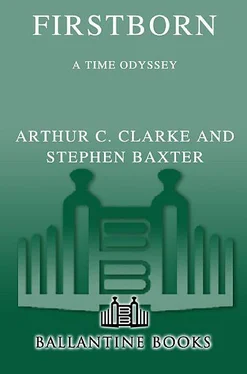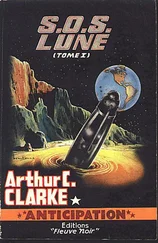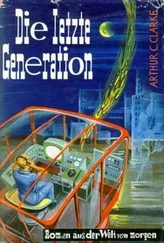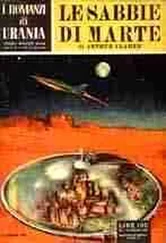It wasn’t a job that required a great deal of specialist skill in Martian conditions, and so it was an ideal assignment for Myra, a Martian by recent circumstance. For safety reasons she couldn’t travel alone on these cross-planet rover jaunts, however, and so she had been assigned Ellie as a companion, a physicist rather than a Mars specialist who might be better employed elsewhere. Ellie had been quite happy to go along with her; she could continue her own work just as well in a moving rover as in a station like Lowell or Wells — better, she said, for there were fewer distractions.
Of course, Ellie’s work was far more important than any trophy-hunting. Ellie was working with a system-wide community of physicists and cosmologists on predictions of what was to become of Mars. Right now she was looking at deep-sky images of star fields. As far as Myra understood, their best data came not from Mars itself but from studies of the sky: though it was hard to grasp, the distant stars no longer looked the same from Mars as they did from the Earth. It defeated Myra’s imagination how that could possibly be so.
Anyhow the retrieval program had been successful in terms of its own goals. With the help of orbital mapping Myra and others had reached the Vikings, tonnes of heavy, clunky, big-budget Cold War engineering, where they still sat in the dry, rocky deserts to which cautious mission planners had consigned them. The famous, plucky Pathfinder craft with its tiny robot car had been retrieved from its “rock garden” in the Ares Vallis — that one had been easy; it wasn’t far from Port Lowell, site of the first manned landing.
Myra knew that British eyes had been on the retrieval of fragments of the Beagle 2, an intricate, ingenious, toylike probe that had not survived its journey to the Isidis Planitia. And then there had been the recovery of the exploration rovers, Spirit and Opportunity, worn out by journeys that far exceeded their design capabilities. All these antique artifacts were destined for Smithsonian establishments on the Earth and Moon.
The retrieval expeditions had had scientific goals too. There was some interest in how man-made materials had withstood up to a century of exposure to Martian conditions. And the landing sites were of interest in themselves — otherwise the probes would not have been sent there. So Myra and Ellie had worked through a crash last-minute science program of sampling, mapping, and coring.
There had even been efforts to retrieve some of the elderly orbiters, still spinning around Mars, long silent. There was universal disappointment when it was discovered that Mariner 9, the very first orbiter, was gone; if it had survived into the 2040s it was surely swallowed up when sunstorm heat caused a general expansion of the Martian atmosphere.
Myra was glad to have something constructive to do. But she hadn’t expected such intense public scrutiny of her treasure-hunting, with every move being followed by a system-wide audience. The crews had been promised that no images would be returned from the rover cabin itself. But Myra tried never to forget that the rover’s systems could easily be hacked; she could be watched at any moment.
The day wore on, and the daylight, already murky under the rover’s artificial dust storm, began to fade. Myra began to fret that they would not after all find the wreck of Mars 2, as the light ran out on this anniversary day.
Then Ellie sat back, staring at a complex graph on her softscreen.
Myra studied her. She had gotten to know this edgy physicist well enough to understand that she wasn’t given to extravagant displays of any emotion save irritation. This sitting-back and staring was, for Ellie, a major outburst.
“What is it?”
“Well, there it is.” Ellie tapped her screen. “The destiny of Mars. We’ve figured it out.”
“All right. So can you say what it means, in simple terms?”
“I’m going to have to. According to this message I’m to take part in a three-world press conference on it in a couple of hours. Of course the math is always easier. More precise.” She squinted out at the dust, thinking. “Put it this way. If we could see the sky, and if we had a powerful enough telescope, we would see the most distant stars recede. As if the expansion of the universe had suddenly accelerated. But we would not see the same thing from Earth.”
Myra pondered that. “So what does that mean?”
“The Q-bomb is a cosmological weapon. We always knew that.
A weapon derived from the Firstborn’s technology of universe creation. Yes?”
“Yes. And so—”
“So what it has done is to project Mars into its own little cosmos. A kind of budding-off. Right now the baby Mars universe is connected smoothly to the mother. But the baby will come adrift, leaving Mars isolated.”
Myra struggled to take this in. “Isolated in its own universe?”
“That’s it. No sun, no Earth. Just Mars. You can see that this weapon was just supposed to, umm, detach a chunk of the Earth.
Which would have caused global devastation, but left the planet itself more or less intact. It’s too powerful for Mars. It will take out this little world altogether.” She grinned, but her eyes were mirth-less. “It will be lonely, in that new universe. Chilly, too. But it won’t last long. The baby universe will implode. Although from the inside it will feel like an ex plosion. It’s a scale model of the Big Rip that will some day tear our universe apart. A Little Rip, I suppose.”
Myra pondered this, and didn’t try to pursue the paradox of implosions and explosions. “How can you tell all this?”
Ellie pointed to the obscured sky. “From the recession of the stars we’ve observed with telescopes on Mars, a recession you wouldn’t see from Earth. It’s an illusion, of course. Actually the Mars universe is beginning to recede from the mother. Or, equivalently, vice versa.”
“But we can still get off the surface. Get to space, back to Earth.”
“Oh, yes. For now. There is a smooth interface between the universes.” She peered at her screen and scrolled through more results. “In fact it’s going to be a fascinating process. A baby universe being born in the middle of our solar system! We’ll learn more about cosmology than we have in a century. I wonder if the Firstborn are aware of how much they’re teaching us…”
Myra glanced uneasily about the cockpit. If they were being hack-watched, this display of academic coldness wasn’t going to play too well. “Ellie. Just rejoin the human race for a minute.”
Ellie looked at her sharply. But she backed off. “Sorry.”
“How long?”
Ellie glanced again at her screen and scrolled through her results.
“The data is still settling down. It’s a little hard to say. Ballpark—
three more months before the detachment.”
“Then Mars must be evacuated by, what, February?”
“That’s it. And after that, maybe a further three months before the implosion of the baby cosmos.”
“And the end of Mars.” Just six more months’ grace, then, for a world nearly five billion years old. “What a crime,” she said.
“Yeah. Hey, look.” Ellie was pointing to a crumpled, dust-stained sheet protruding from the crimson ground. “Do you think that’s a parachute?”
“Rover, full stop.” The vehicle jolted to a halt, and Myra peered. “Magnify… I think you’re right. Maybe the twisters whip it up, and keep it from being buried. What does the sonar show?”
“Let’s take a look. Rover…”
And there it was, buried a few meters down under the wind-blown Martian dust, a squat, blocky shape easily imaged by the sonar.
Читать дальше











